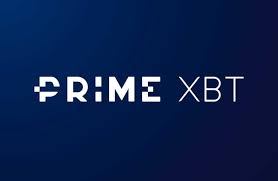Is a machine more reliable than humans when complying with MiFID II rules in FX? – Guest Editorial
The pan-European MiFID II infrastructure directive which was set in place early this year by the European Securities and Markets Authority (ESMA) has been a double-edged sword.

Peter Iosif is a Senior Research Analyst at IronFX, and is a Chartered Accountant (ACA).
Mr. Iosif joined IronFX in 2017 as part of the sales force. He soon moved to the IronFX Strategy team as a Research Analyst. Mr. Iosif has earned a BSc in Business Management from the University of Macedonia (Greece) and continued to become a fully qualified member of the Institute of Chartered Accountants in England and Wales.
Prior to joining IronFX as an Analyst, he held various positions as auditor, consultant and finance director specializing in fields such as business turnaround strategy, dynamic linear models, cash flow management and negotiations.
Indeed, it has made tremendous efforts to reform the entire structure of retail FX brokerages largely with a view to standardizing practice and aiming for all trading infrastructure from the trading interface right through to execution, clearing and trade reporting as part of a quest for transparency and customer protection, however there are many key personnel in the financial sector that are not completely au fait with every aspect of its remit.
Whilst the intention is absolutely clear and welcome, the delivery is flawed in that many compliance officers still are unaware of the full detail, hence brokerages could fall foul of regulatory scrutiny even if operating within what they understand to be the framework of MiFID II.
Thus, automation could provide a good solution.

Today’s facial recognition technology is of such high resolution and has such a low failure rate that national governments are using it routinely at borders when admitting (or not!) millions of people every day worldwide.
In this age of biometric national passports and automated airport security systems, the ability for a computerized government database to be able to connect to a biometric recognition system to vet entries and exits across the world is very much proven, and is very likely to be more accurate than human resources.
As an equally effective paradox to watertight systems that only allow access to data or international mobility via completely unique attributes such as the iris within a human eye, criminal entities with intentions to defraud are also using high technology and ruses that appear plausible to the potential victim in order to empty bank accounts – and similarly electronic trading accounts – of retail customers worldwide.
During the third quarter of last year in Britain, two of the nation’s largest banks Halifax and Lloyds, sent identical letters to their banking customers asking for the recipients to confirm that they are a UK resident for tax purposes, which, as it turns out, was genuine on both sides, but raised the alarm within many customers who were reluctant to respond for fear that it was a bogus request.
The general public across many modern nations – which let’s face it – represents absolutely the target audience for many large retail FX companies of good standing – have demonstrated their faith in biometric security systems, as there has been no reported resistance by any individuals or groups when being asked to provide photographs to government agencies in order to be able to use facial recognition systems to verify identity for all manner of very important and security-dependent tasks.
Yet, when a physical letter is sent, retail customers are beginning to doubt its legitimacy.
This is perhaps due to a widespread understanding that unique facial features are absolutely unable to be counterfeited, as today’s members of modern society are no longer afraid of ‘harvesting of information’ by governments as was the case in the 1990s with those who are now retirement age, but fully understand the modern systems which operate both for the preservation of legitimacy and compliance, and also methods used for nefarious purposes.
Now, with MiFID II in full effect, retail FX firms are in the process of digesting the somewhat ambiguous infrastructural rulings from ESMA which have thus far required exponential explanation to compliance personnel by specialist regulatory technology firms and trade repository executives across the world.
Within MiFID II’s stipulations on the reformatting of brokerage infrastructure, absolutely no advancement in cybersecurity for retail clients has been included.
In the advent of the implementation of MiFID II, Bloomberg deduced that given industry-wide implementation costs that are expected to exceed €2.5 billion as firms face reworking KYC (know your client) process, repapering clients and reconfiguring systems, they should consider focusing on implementing in the most efficient way possible.
Bloomberg also displayed its viewpoint last year that while the regulation also gives firms an opportunity to enhance their services, gather more useful and accurate data and – most importantly – boost competitiveness, interpreting the KYC data and new client onboarding and reporting requirements in the right way will be critical to success.
Quite simply, this is absolute testimony to the outmoded nature of most mainstream financial services reporting and advisory firms (some of which are being paid subscriptions of over $30,000 per month for their consultancy services), and also highlights the ineptitude of those responsible for consulting with ESMA on behalf of national regulators.
This of course does not simply apply to European markets, as the prevention of fraudulent access to retail trading accounts is the responsibility of every broker and regulator globally, however given the complexity and requirement to restructure the environment which operates FX firms in Europe, this has been overlooked.
Today’s smartphone cameras can easily be used to verify account access via facial recognition, as can computer webcams.
The FX industry is so multi-faceted that the need for cybersecurity exists in many specific areas such as the electric payment processing sector, the safeguarding of client funds in online trading accounts and the actual access to trading accounts themselves in order that trades can be opened and closed.
Facial recognition technology would prevent this entirely. Basically, no face, no withdrawal.
Once again, it will likely be down to the avantgarde R&D departments within retail FX firms – often those are at the absolute leading edge of development within this industry – to develop such systems and pave the way forward, as the regulators are unlikely to take the lead.
He who invents and successfully implements it will gain historic acclaim as he who put a stop to cyber threats in the retail FX industry.
The subject matter and the content of this article are solely the views of the author. FinanceFeeds does not bear any legal responsibility for the content of this article and they do not reflect the viewpoint of FinanceFeeds or its editorial staff.









